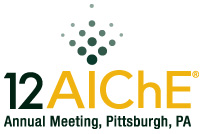

Production of bioethanol from agricultural and forest residues have been attracted considerable efforts as this lignocellulosic biomass is the most abundant renewable material and has the potential to serve as a sustainable feedstock for biofuel. Conversion process of lignocelluloses to bioethanol typically involves three mains steps: (i) pretreatment to break down recalcitrant lignocellulosic structure; (ii) enzymatic hydrolysis of lignocellulose to produce sugars; and (iii) fermentation of sugars to bioethanol. In the enzymatic hydrolysis of lignocellulosic biomass, sugars mainly hexose and pentose are produced that can be fermented into ethanol. However, at the same time a range of toxic compounds such as furans, carboxylic acids, and phenolic compound are also generated. Furfuran and hydroxymethyl furfuran formed as by-products of the hydrolysis process have been known to inhibit growth rate and ethanol productivity. Carboxylic acids have been identified to diminish the cell membrane function. Phenolic compound released from lignin structures could decrease ethanol yield. Various detoxification strategies have been studied to remove the inhibitors including enzyme treatment, neutralization, overliming, use of molecular sieves, vapour extraction, or liquid-liquid extraction.
In this project, a hollow fiber membrane reactor immobilized with Zymomonas mobilis ZM4 is proposed to overcome the inhibitory effects from toxic compounds. Actively growing Z. mobilis ZM4 immobilized within the porous matrix of asymmetric-wall hollow fiber membrane is protected by the membrane barrier between the toxic and the cells. Toxic compounds are added in varying concentrations and subsequent inhibitions on growth and ethanol production of the system are evaluated. The advantage of this system is that it could remove the pre-fermentation treatment, potentially reducing investment and operating cost.
Presenter(s)
Once the content has been viewed and you have attested to it, you will be able to download and print a certificate for PDH credits.
If you have already viewed this content,
please click here
to login.
